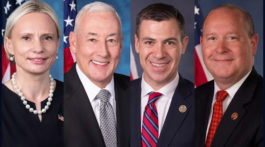Experts at The Pew Charitable Trusts identify ways state leaders can better prepare for midyear budget gaps in a new brief.
Pew says the last two years have posed wide-ranging challenges for state budgets. While these challenges have underlined the need for states to better prepare for singular fiscal shocks – like a pandemic – states can also better prepare for the more routine budget gaps they experience with relative frequency.
In this latest brief, experts advise state leaders to:
- Make key decisions in advance. Important decisions include when midyear adjustments should be initiated, who is responsible for acting, and what budget-balancing options are available. To ensure these choices reflect the preferences of both the legislative and executive branches, states should plan for mid-year gaps during their regular budget processes.
- Plan for likely scenarios. State plans to close midyear shortfalls should be informed by estimates of how large the gaps could grow. States should project the size of potential gaps in advance, then carefully monitor whether the budget is falling out of balance during the year. They should also identify ahead of time options for closing any gaps that occur.
This year, many states are enjoying robust revenues and budget surpluses. As lawmakers plan for better days ahead, Pew says they should be mindful that they will inevitably face midyear budget gaps in the future. By taking the steps outlined in this new research, leaders can ensure they’re ready for the next shortfall.
Find the brief here: https://pew.org/3Ml45eK
Indy Politics spoke with Pew researcher Adam Levin. You can hear him in the Leon-Tailored Audio above. It runs for about 19 minutes.










